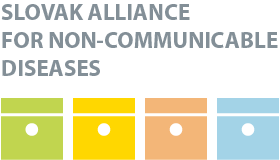—
HPI
The HiT profiles are produced by country experts in collaboration with the Observatory’s research directors and staff. The profiles are based on a template that, revised periodically, provides detailed guidelines and specific questions, definitions, suggestions for data sources and examples needed to compile HiTs.
> 9.2 HiT methodology and production process Anti-Monopoly Office of the Slovak Republic (2009). Anti-Monopoly Office punishes the Association of University Hospitals (press release, 8 January). Bratislava, Anti-Monopoly Office of the Slovak Republic (http://www.antimon.gov.sk/12/3267/protimonopolny-urad-srulozil- asociacii-fakultnych-nemocnic-slovenskej-republiky-pokutu-vo-vyske-1-59796.axd, accessed 27 March 2011). Bahelka M (2008). Analýza systému záchrannej zdravotnej služby po reforme [Analysis of EMS after reform]. Into […]
The considerable improvement in the overall health status of the Slovak population over the past 20 years cannot be explained by economic progress and higher spending on health care alone. The second cause of the increase in life expectancy is changes in behaviour. Slovakians increasingly adopt healthier lifestyles, exercise more and eat more healthily. A third, very important factor in the gains in life expectancy since 1990 is the introduction of new diagnostic technologies, new treatment methods and the application of the latest evidence.
The Slovak health system has historically been characterized by high utilization of health care services. Although the introduction of user fees in 2003 decreased the number of contacts, the visiting rate remained high. After reducing and partly abolishing the user fees in 2006, the number returned to 2002 levels by 2007. As a heritage from the past, where universality, access and free health care was the main agenda, Slovak people enjoy a dense network of providers, both in outpatient and inpatient care.
IMF study (2007) concludes that Slovakia combines relatively low health spending with relatively poor health outcomes. Inefficiencies in the Slovak health system occur mostly in the process of transforming intermediate health resources into health outcomes. The IMF study sees two reasons for this. First, this is due to inertia – for instance, hospital structures may still reflect old standards and a significant proportion of current health workers were educated in the pre- and early transition period. Second, high cost–effectiveness in Slovakia reflects relatively low prices for labour and other inputs for health services. As a result, despite spending levels, real resources in the health sector are relatively high.
Due to the 2004 health reform, the Kakwani index dropped • slightly, from 0.074 (2002) to 0.045 (2005). Although the progressivity of direct taxes and SHI has increased, at the same time the regressivity of indirect taxes and direct payments has increased.
The objectives of the current Slovak health care system originate from the Bismarck and Semashko health system models. Its primary purpose is to ensure universality, equity and free access to health services at the point of delivery; however, these objectives are met only formally in practice (for example, patients make informal payments to doctors) and any potential changes (for example introduction of user fees) are not welcomed by the population due to cultural patterns and conventions.
The government that came to power after the 2010 elections consists of four political parties, which have a conservative or liberal background. In health insurance, the government strives to support the development of voluntary complementary health insurance and to allow health insurance companies to make a profit. The government aims to reduce barriers for new entrants to the health insurance markets.
The implementation of user fees in June 2003 was aimed at reducing the demand for health care. In result, the number of physician visits in primary care dropped by 10% in the second half of 2003 compared to the same period in 2002. Similar results were observed in first aid department visits (reduction of 13%). On the other hand, the changes to physician visits in secondary care (-2%) and hospitalizations (-2%) were not significant.
Health reform in 2002–2006, as part of a larger reform plan labelled as “Slovakia’s neo-liberal turn”, introduced hard budget constraints and aimed at effectively utilizing scarce resources and uncovering internal system reserves. The state significantly reduced its active involvement in favour of regulated market mechanisms.
News
The amendment of the Decree on emergency medical service
Health insurance companies returned over 400 thousand €
The HCSA received 1,647 complaints last year
A half million people will earn more
Most of public limited companies ended in the black
Debt of hospitals on premiums has grown to nearly € 105 MM
Slovak health care may miss € 250 million next year
Profits of HIC amounted to € 69 mil. last year
Owners of Dôvera paid out money but did not paid taxes
Like us on Facebook!
Our analyses
- 10 Years of Health Care Reform
- New University Hospital in Bratislava
- Understanding informal patient payments in Kosovo’s healthcare system
- Analysis of waiting times 2013
- Health Policy Basic Frameworks 2014-2016
- Analysis of informal payments in the health sector in Slovakia
- Serbia: Brief health system review
developed by enscope, s.r.o.
